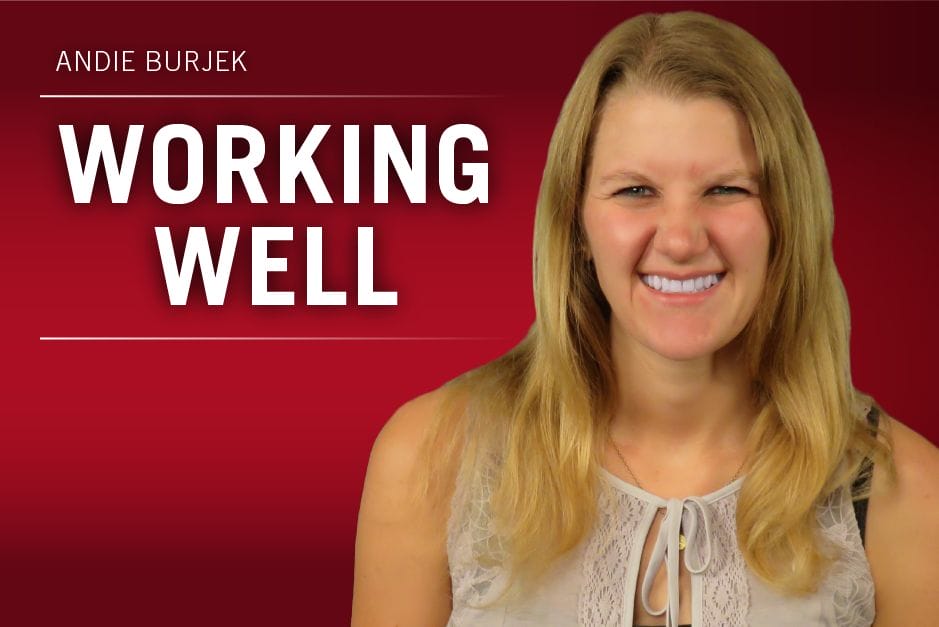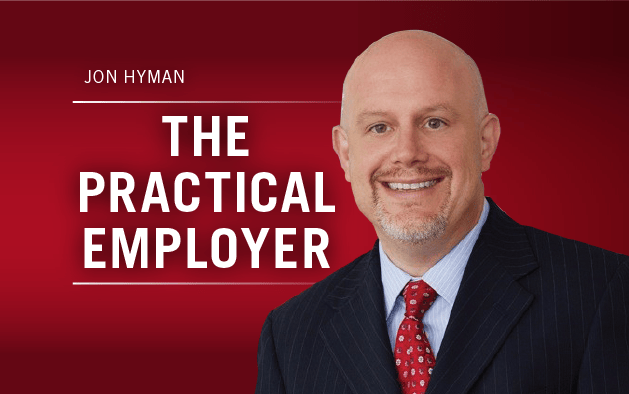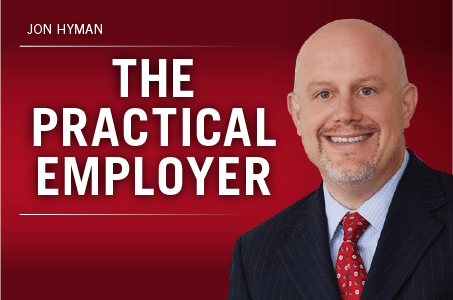When you write about topics as broad as benefits and wellness, it’s easy to have too many ideas and want to write about a million things at once.
But that’s impossible. So these are some topics in the health and benefits space that have intrigued me these past few weeks. They relate to employee wellbeing based on compensation; the employer mandate; days off; and a wellness conference.
What’s been on your mind recently? Any trends, debates or legislation that you find especially fascinating? Let me know!
Unpaid Internships and the Government Shutdown
I had many reactions to the government shutdown, which doubtless made a lot of employees’ lives difficult, having to work in some cases while not getting paid while benefits were compromised and many people had to deal with things like not being able to afford basic necessities like food and rent. I recognize that the struggle this put on federal workers was very rough.
It made me think of unpaid internships. These interns must go through these exact same struggles (unless they’re wealthy, or their family is) of needing to work their asses off while not getting paid. A lot of students can’t take internships that would be good experience and look good on their resume because they need to make money and pay basic expenses. Proponents of the unpaid internship argue that they are a valuable learning experience or that students can get class credit.
But in my opinion as a millennial in the beginning of my career, most of us in college needed to take out loans to afford an education. Couple that with unpaid internships and entry-level jobs that for many fields pay minimally. The financial burden put on young people through education costs and unpaid work can be significant.
All I’m saying is, at least pay your interns minimum wage. It’s the least you can do. People should get compensated for the work they perform.
Some Employer Mandate News
I came across a couple of BenefitsPRO articles recently that highlight two opposing ideas of the same debate. In late 2018 the U.S. Department of Labor, Department of Health and Human Services and Treasury Department proposed a rule that employers could circumvent employer-mandate penalties by setting up a health reimbursement account that employees could use to purchase health care in the individual market.
The 2018 tax reform legislation struck down the individual mandate. But the employer mandate, an Affordable Care Act provision that states employers must provide affordable health insurance to employees or else face a fine, is still in place.
On the pro side: Large employees would realistically continue to offer group health plans to attract and keep talent. Meanwhile, it could potentially help smaller employers in the 50- to 100-employee range. Also, to avoid penalties, employers would have to make an HRA contribution such that “any remaining premiums the employee would have to pay wouldn’t exceed a percentage of his or her income to be considered affordable under the employer mandate.”
On the opposing side: Employers and employees may not fully understand the differences between employer-sponsored health care and the individual health insurance marketplace, and the limitations that exist between them. Also, the new rules could potentially incentivize employers to switch sicker, more expensive enrollees to the individual market.
“If employers could move sicker patients toward individual and short-term plans — some of which have more restricted coverage — the employer could save money. In addition, short-term plans often are more restrictive about pre-existing conditions,” the article states.
If these rules are finalized, they wouldn’t take effect until Jan. 1, 2020 at the earliest, according to BenefitsPRO.
What do you think?
Should the Super Bowl Be a National Holiday?
I want to give a shout out to a Twitter user and lawyer @SonyaOldsSom who responded to a Workforce tweet with something obvious but important. Also, it speaks to an even broader idea than what she was specifically talking about.
We posted a podcast in February 2018 in which hosts Rick Bell and Frank Kalman briefly discussed if the Monday after the Super Bowl should be a national holiday. That idea, simply, came from organizations’ frustrations that people often aren’t as productive as usual that day.
This was @SonyaOldsSom’s response:
Not before Election Day is https://t.co/Bm8RzGmqR1
— Sonya Olds Som (@SonyaOldsSom) February 2, 2019
Amen! Sure, National Super Bowl Monday is a cute idea to debate, but employers (and whoever decides what national holidays are) should consider the thing that’s been right under their noses for a long time. In general, for any organization, it can be easy to get swept up in trendy sounding ideas — whether that’s open office spaces, yoga classes or some other buzzword — but what’s more valuable to people are these straight-up practical ideas, like having voting day as an official holiday.
The MBGH Wellness Forum
I recently attended an employer-only wellness forum hosted by the Midwest Business Group on Health, and although I’ve already written about some of the major takeways, there were a few other ideas that came up that are worth exploring:
- I spoke to a man who expressed to me one of his greatest frustrations in the workplace wellness space: when companies go gaga over wellness programs without addressing cultural concerns like an abusive or toxic work environment. I agree!
- One of my unlikely tablemates was Bruce Sherman, medical director for the National Alliance of Healthcare Purchaser Coalitions. I’ve coincidentally already interviewed him for a story coming up in our March issue! At this conference, he gave a talk about addressing employees with multiple chronic conditions [note: “multimorbidity” is the coexistence of multiple chronic conditions] in your wellness programs. One of his ideas: disease management programs that specifically address one chronic condition oftentimes do not sufficiently help employees with multimorbidity!
- Sherman also mentioned that while people in the health care industry tend to have a narrow, clinical mindset with patient health, patients have many more focuses and stresses in their life. Personal health is just one of them — and, according to one survey, it’s not even the highest priority. Ranking factors that stress people out, “personal health” is No. 8, below other factors like finances, family health and work schedule. Personal health is not something that exists in a vacuum for employees!






 A while back a source mentioned to me that many people have a limited view on mental illness. It’s depression; it’s anxiety; or maybe it’s PTSD. But there are many more mental illness conditions to address. Like eating disorders.
A while back a source mentioned to me that many people have a limited view on mental illness. It’s depression; it’s anxiety; or maybe it’s PTSD. But there are many more mental illness conditions to address. Like eating disorders.



 Atlantic Capes Fisheries agreed to pay $675,000 to settle a lawsuit filed by the EEOC alleging sexual harassment and retaliation.
Atlantic Capes Fisheries agreed to pay $675,000 to settle a lawsuit filed by the EEOC alleging sexual harassment and retaliation.
 One of the questions that clients ask me most often is, “________ is out on a medical/pregnancy leave (or just returned); can we fire him/her?”
One of the questions that clients ask me most often is, “________ is out on a medical/pregnancy leave (or just returned); can we fire him/her?”